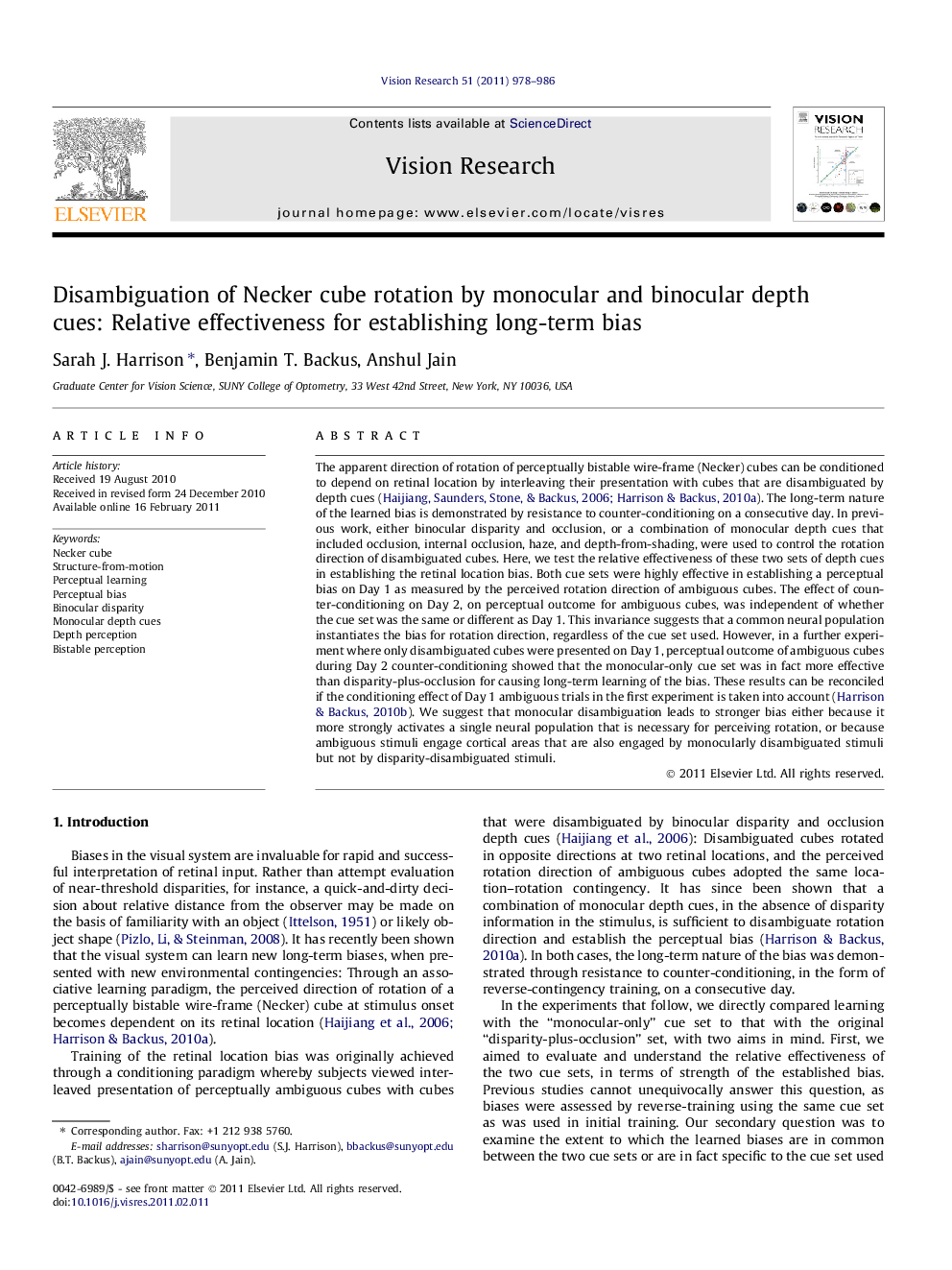| کد مقاله | کد نشریه | سال انتشار | مقاله انگلیسی | نسخه تمام متن |
|---|---|---|---|---|
| 6203769 | 1263445 | 2011 | 9 صفحه PDF | دانلود رایگان |

The apparent direction of rotation of perceptually bistable wire-frame (Necker) cubes can be conditioned to depend on retinal location by interleaving their presentation with cubes that are disambiguated by depth cues (Haijiang, Saunders, Stone, & Backus, 2006; Harrison & Backus, 2010a). The long-term nature of the learned bias is demonstrated by resistance to counter-conditioning on a consecutive day. In previous work, either binocular disparity and occlusion, or a combination of monocular depth cues that included occlusion, internal occlusion, haze, and depth-from-shading, were used to control the rotation direction of disambiguated cubes. Here, we test the relative effectiveness of these two sets of depth cues in establishing the retinal location bias. Both cue sets were highly effective in establishing a perceptual bias on Day 1 as measured by the perceived rotation direction of ambiguous cubes. The effect of counter-conditioning on Day 2, on perceptual outcome for ambiguous cubes, was independent of whether the cue set was the same or different as Day 1. This invariance suggests that a common neural population instantiates the bias for rotation direction, regardless of the cue set used. However, in a further experiment where only disambiguated cubes were presented on Day 1, perceptual outcome of ambiguous cubes during Day 2 counter-conditioning showed that the monocular-only cue set was in fact more effective than disparity-plus-occlusion for causing long-term learning of the bias. These results can be reconciled if the conditioning effect of Day 1 ambiguous trials in the first experiment is taken into account (Harrison & Backus, 2010b). We suggest that monocular disambiguation leads to stronger bias either because it more strongly activates a single neural population that is necessary for perceiving rotation, or because ambiguous stimuli engage cortical areas that are also engaged by monocularly disambiguated stimuli but not by disparity-disambiguated stimuli.
⺠Monocular cues and binocular disparity both disambiguate apparent 3D rotation. ⺠Retraining of visual bias for 3D rotation is independent of initial training method. ⺠Monocular cues establish a stronger perceptual bias than does binocular disparity.
Journal: Vision Research - Volume 51, Issue 9, 11 May 2011, Pages 978-986